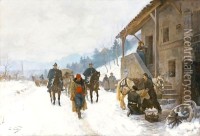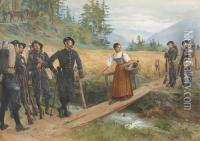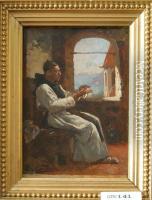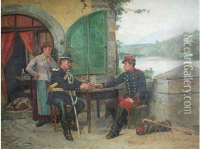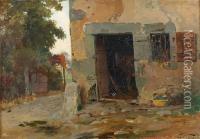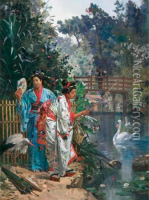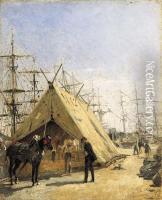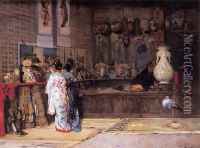Edouard Castres Paintings
Édouard Castres was a Swiss painter known primarily for his historical and ethnographic scenes. Born on July 9, 1838, in Geneva, Switzerland, Castres developed an interest in art at an early age. His talent was recognized and nurtured, leading him to study under various prominent artists of the time. As a young man, he traveled extensively, which had a profound influence on his work.
Castres is perhaps best known for his panoramic painting, the 'Bourbaki Panorama', which is an immense circular painting that depicts the retreat of the French Eastern Army, commanded by General Bourbaki, into Switzerland in the winter of 1871 during the Franco-Prussian War. This monumental work, created in 1881, is one of the few remaining panoramas from the 19th century and is displayed in Lucerne, Switzerland.
Throughout his career, Castres was particularly interested in capturing the lives and customs of various peoples. He was not just a painter but also a keen observer of social and historical events. His travels with the Red Cross during the Franco-Prussian War allowed him to witness events firsthand, and he often included these experiences in his artwork.
Édouard Castres' paintings were marked by a keen attention to detail and a strong sense of realism, which was typical of the academic art style of the period. His works reflect a certain romanticism of the era, as well as an interest in capturing the human aspect of historical events.
Despite his success, Castres is not as widely known today as some of his contemporaries. However, his contributions to the field of historical painting and his unique perspective on the events of his time remain significant.
Édouard Castres passed away on December 24, 1902, in Geneva. His legacy is preserved through his works, which continue to be studied and appreciated for their historical value and artistic merit.
